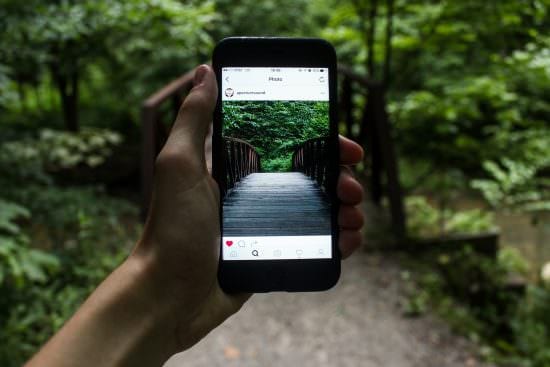Facebook, Instagram, LinkedIn and Twitter content strategy
Just like snowflakes, no two social media platforms are alike. Yet marketers often take the one-size-fits-all approach to social media advertising, applying the same methodology to all clients and campaigns regardless of objectives and using the same creative across all marketing channels.
While this approach is undoubtedly easier, it doesn’t take into account that each social media platform has different types of users at different parts of the purchasing funnel. You could be inadvertently sending conversion-focused messaging to someone who’s still in the brand awareness stage, which is risky because 41 percent of social media users say they won’t hesitate to unfollow a brand that shares irrelevant information.
Download our updated premium member’s resource- Facebook Advertising Guide
A practical guide to the opportunities that exist for advertising on Facebook. This guide will update you with all the latest changes and give you practical advice on setting up and optimising your Facebook ads to get the best possible results.
Access the Facebook advertising guide
Rather than post all marketing content to all platforms, take advantage of the unique possibilities that each platform provides. Here’s how to optimize your strategy and track your success on four popular platforms:
1. Facebook
To say that everyone is on Facebook is hardly an exaggeration. When they’re online, users spend one out of every six minutes on the platform, and on mobile, that number jumps to one out of every five minutes. You can also find Facebook users at each stage of the purchasing funnel because it offers a variety of campaign objectives.
To interact with customers at the top and middle of the funnel, try publishing awareness-boosting messages — such as links to internal content — to introduce people to your brand, generate interest, and drive them to your website.
Measure your success by tracking impressions, CPM, and reach; then, analyze site visits and dig into Facebook’s gold mine of data to build a custom audience. Target these audience members with conversion-driving content, and it will encourage them to buy your product or sign up for your service.
2. Instagram
Instagram is great for a top-of-the-funnel approach, boosting brand awareness and engagement. Compared to newer, trendier social media sites, Instagram’s audience base is slightly older — ranging from 18- to 49-year-olds — and its members are unique in that they discover and follow pages that serve a niche demand, such as new recipes, DIY crafts, or healthy lifestyles. That means it’s crucial that you know your target audience and only create posts that specifically resonate with it.

The good news is that, in general, Instagram users aren’t opposed to interacting with brands, with 50 percent of users following at least one business and 75 percent of them willing to take action when they see an ad on the platform. But keep in mind that the ads must be relevant and use visually pleasing images or video rather than text to grab users’ attention.
You can also apply what you learn about your custom audience on Facebook to your Instagram strategy. Then, track your success by analyzing metrics such as reach, post engagement, and video views.
3. LinkedIn
LinkedIn is a little different from other social sites in that its primary focus is business. It’s an especially valuable platform for B2B companies, as 46 percent of their social traffic originates from LinkedIn.
For this social platform, focus on building brand credibility, nurturing relationships and connections, and providing relevant content with clear CTAs and very little clutter. Test multiple variations of the content you create for performance, and take advantage of any new functionalities, such as the conversion-tracking feature and long-form articles.
While integrating third-party tools to track actions and conversions is helpful, there are few tools available that function within LinkedIn. Instead, you may need to outsource ad service and monitor key metrics such as page reach, post engagement, and new followers.
4. Twitter
Like Facebook, Twitter users run the gamut of the purchase funnel. And like Instagram, they’re also not afraid to interact with brands. For instance, 57 percent of users discover new small- or medium-sized businesses through Twitter, and about half of those users have visited the company’s store or website after the discovery.
Because of this wide target audience, you’ll need to personalize your messages based on geography, user behavior, or the device individuals use. Then, you can use keyword targeting and track CPC, CPM, impressions, and engagement to see whether your efforts are boosting traffic.
Using the same creative content across all social media platforms won’t let your campaigns speak to consumers in the best possible way, and you’ll miss out on a huge opportunity to truly engage with potential customers on each platform. Customizing and tracking the success of your content based on the platform you use lets you deliver the most relevant content to consumers and drive them to convert.

Thanks to Sean Cotton for sharing advice and opinions in this post. Sean is president of
Coegi, an independent programmatic and social media buying company that provides transparent and collaborative media services to agencies and in-house brand marketing teams. As an expert in digital and programmatic best practices, Sean has been featured as a speaker or a contributor for numerous digital industry associations. Prior to starting Coegi, Sean built and managed a large digital and social staff for one of the fastest-growing media agencies in the U.S. You can connect with him on
LinkedIn.





 Thanks to Sean Cotton for sharing advice and opinions in this post. Sean is president of
Thanks to Sean Cotton for sharing advice and opinions in this post. Sean is president of 


